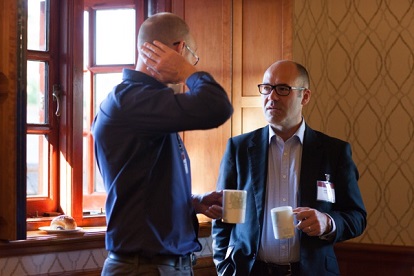When digital transformation is done right, it’s like a caterpillar turning into a butterfly, but when done wrong, all you have is a really fast caterpillar.
Key message
Tracking client engagement, an important and universally acknowledged challenge, is creeping up the list of CMOs’ priorities. And while many wealth firms, traditionally considered laggards in implementing client engagement programmes, have started to actively gather feedback and track key metrics to improve customers’ experience (CX) – more needs to be done to understand where we are as an industry to be able to better service our clients and their evolving needs.
Headlines
- Digital transformation is happening now and is unavoidable. To deliver it, firms must engage throughout their organisation including staff and clients.
- Innovation and change is about incremental steps, not a big bang. It needs time and space, as well as leadership from the top to drive it through the organisation.
- Internal scepticism and resistance might exist but through engagement, participation and leadership, firms can bring people onboard.
- While at the headline level, the digitalisation process for every firm has many similarities, every firm must also realise the high level of complexity involved and take the time and effort to build a vision and process that is specific and relevant to them.
- Digitalisation remains early in its journey, but the pace of change has picked up.
Key challenges
- Don’t try to change everything you feel needs changing (in terms of digital transformation) all at once. Firms should look towards a culture of change so that changes can be made consistently over time. Start by defining what needs to change and develop a strategy from there and build towards that incrementally. Don’t risk losing key individuals by losing focus from trying to do everything at once or too quickly. Put in place a clear vision and communicate that vision with your stakeholders.
- Get the core platform of the business in place and go from there. On top of that core, whether that be a core banking platform, portfolio management system or other platform type, firms can integrate the tools needed for their particular business needs. The core is key and the enabler.
- Some firms are understandably reluctant to totally switch to digitalisation due to the complexity, risk, time and cost involved. For every firm, the decision-making process is a mix of where the business is now and where it wants to go. How the journey looks is therefore dependent on aspects such as the size and nature of their business, the geography and geographies of its operations, what technology it has in place currently and the capacity of that infrastructure to deliver digitalisation, the economics of the business, people and leadership and so on. In essence, this is a multi-layered process which requires a clear focus and structure to be delivered. Depending on the status, firms may prefer to work on improving the quality of their existing processes, platforms or tools so that they work together. Whatever the approach, it must be embedded in what is relevant to your business, not what is happening outside.
- Delivery is based on a transparent focus that is understood by key stakeholders and where status and progress are kept transparent. While a plan might change due to circumstances, any digital transformation project can avoid going off-course by collaborating internally and communicating progress.
- In terms of having a clear vision, you should decide whether you want to do what you already do more efficiently or whether you want a new way of doing things.
- At the heart of the new business model is data. Using Excel for data management is a thing of the past and your data management strategy should be put at the heart of your strategy. Part of that will involve investing in a data management strategy and team to make sure your data is clean, consistent and useful for the organisation.
- To truly deliver on digital, firms should involve their customers from the beginning in the learning, designing, build and delivery phases. Involving clients, staff, partners and other externals will help deliver a proposition that is matched to the needs of your stakeholders and will support engagement.
- Core is also staff training. You should train and retrain staff consistently to keep them up to speed with what they need to do. This is very true for new software tools where, often, a lack of staff training either fails to deliver engagement or a full benefit from the capability of the software. To drive engagement through the organisation, firms should also identify and engage super users and champions. These individuals are critical in spreading the message internally and supporting engagement.
Conclusions
- Digital is not big bang. You should create a culture of constant incremental change.
- To fully deliver digital transformation, there needs to be senior management support and drive. This is not just budgetary but cultural, leadership, commitment, facing the downsides and so on.
- Firms needs a clear vision and to be transparent about that to drive support and engagement from stakeholders. That vision is not rigid and set in stone, but flexible and accountable.
- Digitalisation is specific to each business. Not every company needs every component and what is fashionable is not necessarily right. Digital transformation should be specific to you.
- Staying tuned to market developments is important. Be aware, engage with the market, share ideas and listen.
- Success does not depend on size and budget but commitment. The technology also now exists to support the needs of smaller firms.
- However, don’t underestimate the ongoing resources needed to deliver change. System selection is one small part. Leadership, people, culture and training are as important.
- Be realistic.
Expert: Terry Charlton, Executive General Manager, Iress
Facilitator: Stephen Wall, Co-founder & Head of Marketplace & Content, Wealth Mosaic



